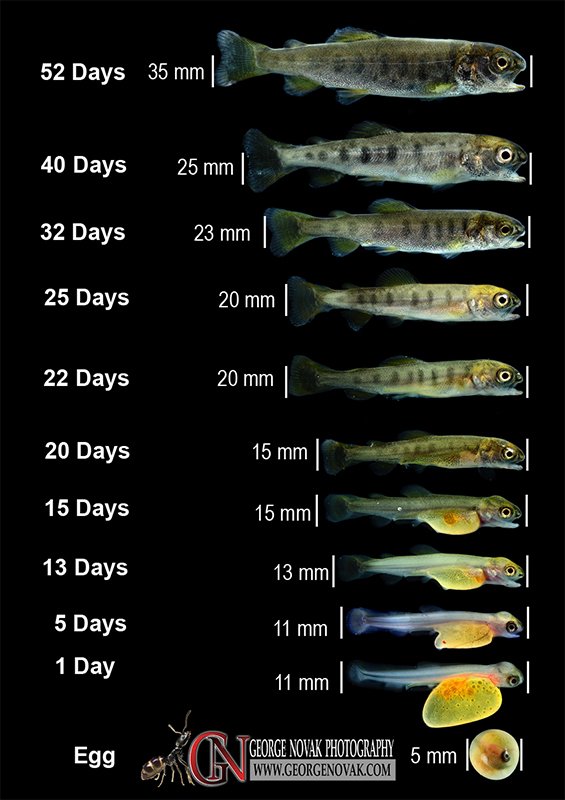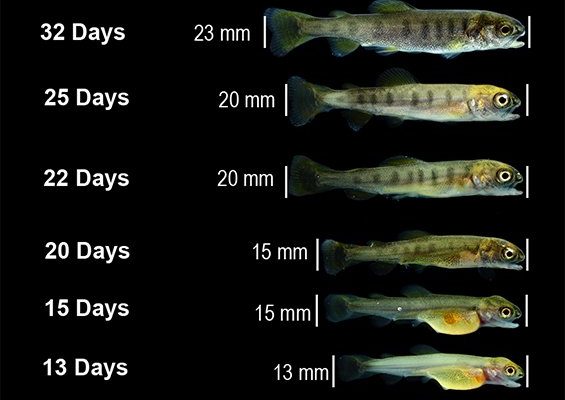
Imagine trout like teenagers in a growth spurt—some grow faster than others, influenced by a mix of factors like species, environment, and diet. In this article, we’re diving deep into the world of trout growth rates, exploring the different types of trout, what affects their size, and why this matters to us as anglers and nature enthusiasts. So, grab a cup of coffee and let’s break it down together.
The Different Types of Trout
There are several species of trout, each with its own distinct characteristics. The most popular types include Rainbow Trout, Brown Trout, and Brook Trout. Understanding these species is key to grasping how fast they grow.
Rainbow Trout are perhaps the most well-known. They are vibrant and can span a range of habitats, from cool rivers to warm lakes. Typically, they grow at a steady pace, reaching around 6 to 8 inches in their first year and can grow to over 30 inches as adults.
Brown Trout are a bit more elusive. Known for their mottled appearance, they can grow quite large, often reaching lengths of 20 inches or more by the age of four. However, they don’t grow as quickly in their early years as rainbow trout.
Brook Trout, on the other hand, are native to cold, clear streams and often grow to smaller sizes. They might reach around 12 inches in length as adults. Understanding these differences helps you to set realistic expectations depending on the type of trout you’re fishing for.
Factors Affecting Trout Growth Rates
So, what influences how fast trout grow? There are several factors, and they can be pretty interesting.
1. Species plays a huge role. As we just discussed, different trout species have different growth patterns. For example, rainbow trout are generally known for their faster growth rates than brook trout.
2. Environment is another biggie. Trout thrive in cool, clean waters rich in oxygen. If the water is warm or polluted, their growth can stunt. Healthy habitats are essential for their development, so keeping our rivers and lakes clean is vital.
3. Food Availability can’t be overlooked. Trout are opportunistic feeders. The more food available, like insects and small fish, the faster they can grow. In the wild, a well-balanced diet leads to more rapid growth during their early years.
The Growth Rate of Trout by Age
Curious about how trout grow over the years? Their growth is typically measured in terms of age and size.
In the first year, many trout species grow significantly. For instance, a Rainbow Trout might grow from a hatchling of just a few inches to around 6-8 inches by the end of its first year.
By year three, things start to pick up. Rainbow trout can reach lengths of about 12-14 inches, while brown trout might be around 10 inches.
Once they hit the four to five-year mark, some species can grow considerably larger. Brown Trout could be around 20 inches, making them a prized catch for anglers.
So, if you think about it, the growth of trout is quite remarkable. It’s like watching a friend evolve from a kid into a young adult.
What Is the Maximum Size of Trout?
Now, you might be wondering, “How big can trout really get?” The answer varies widely depending on the species.
Rainbow Trout can grow up to 30 inches or more, especially in well-maintained environments.
Brown Trout can often reach similar sizes, with some individuals exceeding 30 inches as well.
Brook Trout typically max out around 12–20 inches, depending on their habitat conditions.
The size of trout can also be influenced by their age and environmental factors, like water temperature and food supply. Some anglers specifically target these larger fish, which can add an exciting dimension to the fishing experience.
The Role of Genetics in Trout Growth
It’s pretty fascinating how genetics can play a role in how fast trout grow. Just like humans have family traits, trout can inherit growth patterns from their parent species.
These genetic factors can determine how quickly they reach maturity. Some fish are naturally wired to grow faster, while others might take their time.
Breeding programs also come into play here. Many hatcheries select for fast-growing strains of trout to help boost populations in certain areas. This can create a balance between maintaining healthy fish populations and satisfying anglers looking for a good catch.
The Importance of Habitat for Trout Growth
A healthy habitat is crucial for trout growth and overall well-being.
Trout thrive in clean, cool waters with plenty of oxygen. Rivers and lakes with aquatic vegetation provide shelter and food, which is essential for their growth.
If you’re fishing, it’s important to consider the health of the body of water you’re in. Overfishing, pollution, and habitat destruction can all impact trout populations.
By promoting conservation and respecting natural habitats, we can help ensure that trout continue to grow and thrive in the wild.
So, how fast do trout grow? Well, it really depends on a variety of factors including species, age, environment, and genetics. Just like people, trout have unique growth stories influenced by where they live and what they eat.
As anglers and nature fans, understanding their growth patterns helps us appreciate these beautiful creatures and advocate for their conservation. Whether you’re casting a line or simply enjoying a peaceful day by the water, knowing how trout grow enhances our connection to the natural world.
Next time you’re out fishing or just enjoying nature, take a moment to think about the journey these fishes make. It’s a reminder of the intricate web of life that connects us all.

